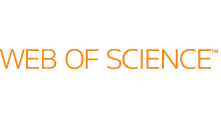Related Research Articles
CiteSeerX is a public search engine and digital library for scientific and academic papers, primarily in the fields of computer and information science.
A citation index is a kind of bibliographic index, an index of citations between publications, allowing the user to easily establish which later documents cite which earlier documents. A form of citation index is first found in 12th-century Hebrew religious literature. Legal citation indexes are found in the 18th century and were made popular by citators such as Shepard's Citations (1873). In 1961, Eugene Garfield's Institute for Scientific Information (ISI) introduced the first citation index for papers published in academic journals, first the Science Citation Index (SCI), and later the Social Sciences Citation Index (SSCI) and the Arts and Humanities Citation Index (AHCI). American Chemical Society converted its printed Chemical Abstract Service into internet-accessible SciFinder in 2008. The first automated citation indexing was done by CiteSeer in 1997 and was patented. Other sources for such data include Google Scholar, Microsoft Academic, Elsevier's Scopus, and the National Institutes of Health's iCite.

Hunan University is a public university in Yuelu, Changsha, Hunan, China. It is affiliated with the Ministry of Education. The university is part of Project 211, Project 985, and the Double First-Class Construction.

In sociology, social complexity is a conceptual framework used in the analysis of society. In the sciences, contemporary definitions of complexity are found in systems theory, wherein the phenomenon being studied has many parts and many possible arrangements of the parts; simultaneously, what is complex and what is simple are relative and change in time.
Citation analysis is the examination of the frequency, patterns, and graphs of citations in documents. It uses the directed graph of citations — links from one document to another document — to reveal properties of the documents. A typical aim would be to identify the most important documents in a collection. A classic example is that of the citations between academic articles and books. For another example, judges of law support their judgements by referring back to judgements made in earlier cases. An additional example is provided by patents which contain prior art, citation of earlier patents relevant to the current claim. The digitization of patent data and increasing computing power have led to a community of practice that uses these citation data to measure innovation attributes, trace knowledge flows, and map innovation networks.
The Science Citation Index Expanded is a citation index originally produced by the Institute for Scientific Information (ISI) and created by Eugene Garfield.

The Social Sciences Citation Index (SSCI) is a commercial citation index product of Clarivate Analytics. It was originally developed by the Institute for Scientific Information from the Science Citation Index. The Social Sciences Citation Index is a multidisciplinary index which indexes over 3,400 journals across 58 social science disciplines – 1985 to present, and it has 122 million cited references – 1900 to present. It also includes a range of 3,500 selected items from some of the world's finest scientific and technical journals. It has a range of useful search functions such as 'cited reference searching', searching by author, subject, or title. Whilst the Social Sciences Citation Index provides extensive support in bibliographic analytics and research, a number of academic scholars have expressed criticisms relating to ideological bias and its English-dominant publishing nature.
A knowledge productionmode is a term from the sociology of science which refers to the way (scientific) knowledge is produced. So far, three modes have been conceptualized. Mode 1 production of knowledge is knowledge production motivated by scientific knowledge alone which is not primarily concerned by the applicability of its findings. Mode 1 is founded on a conceptualization of science as separated into discrete disciplines. Mode 2 was coined in 1994 in juxtaposition to Mode 1 by Michael Gibbons, Camille Limoges, Helga Nowotny, Simon Schwartzman, Peter Scott and Martin Trow. In Mode 2, multidisciplinary teams are brought together for short periods of time to work on specific problems in the real world for knowledge production in the knowledge society. Mode 2 can be explained by the way research funds are distributed among scientists and how scientists focus on obtaining these funds in terms of five basic features: knowledge produced in the context of application; transdisciplinarity; heterogeneity and organizational diversity; social accountability and reflexivity; and quality control. Subsequently, Carayannis and Campbell described a Mode 3 knowledge in 2006.
Chinese Social Sciences Citation Index is an interdisciplinary citation index program in China. It was developed by Nanjing University of China Academy of Social Sciences Research Evaluation Center and the Hong Kong University of Science and Technology in 1998 and was established in 2000. This citation database covers about 500 Chinese academic journals of humanities and social sciences. Now many leading Chinese universities and institutes use CSSCI as a basis for the evaluation of academic achievements and promotion.

The Web of Science is a paid-access platform that provides access to multiple databases that provide reference and citation data from academic journals, conference proceedings, and other documents in various academic disciplines. Until 1997, it was originally produced by the Institute for Scientific Information. It is currently owned by Clarivate.

Louis André (Loet) Leydesdorff was a Dutch sociologist, cyberneticist, communication scientist and Professor in the Dynamics of Scientific Communication and Technological Innovation at the University of Amsterdam. He is known for his work in the sociology of communication and innovation, especially for his Triple helix model of innovation developed with Henry Etzkowitz in the 1990s.
BIOSIS Previews is an English-language, bibliographic database service, with abstracts and citation indexing. It is part of Clarivate Analytics Web of Science suite. BIOSIS Previews indexes data from 1926 to the present.
Index Copernicus (IC) is an online database of user-contributed all information, including profiles of scientists, as well as of scientific institutions, publications and projects established in 1999 in Poland, and operated by Index Copernicus International. The database, named after Nicolaus Copernicus, has several assessment tools to track the impact of scientific works and publications, individual scientists, or research institutions. In addition to the productivity aspects, IC also offers the traditional abstracting and indexing of scientific publications.
The Journal of Integrative Medicine is a bimonthly peer-reviewed medical journal covering all aspects of complementary and alternative and integrative medicine. It was established in 2003 as the Journal of Chinese Integrative Medicine and obtained its current title in 2013. It is published by Science Press and is distributed by Elsevier.
The CWTS Leiden Ranking is an annual global university ranking based exclusively on bibliometric indicators. The rankings are compiled by the Centre for Science and Technology Studies at Leiden University in the Netherlands. The Clarivate Analytics bibliographic database Web of Science is used as the source of the publication and citation data.
Semantic Scholar is a research tool for scientific literature powered by artificial intelligence. It is developed at the Allen Institute for AI and was publicly released in November 2015. Semantic Scholar uses modern techniques in natural language processing to support the research process, for example by providing automatically generated summaries of scholarly papers. The Semantic Scholar team is actively researching the use of artificial intelligence in natural language processing, machine learning, human–computer interaction, and information retrieval.
The triple helix model of innovation refers to a set of interactions between academia, industry and government, to foster economic and social development, as described in concepts such as the knowledge economy and knowledge society. In innovation helical framework theory, each sector is represented by a circle (helix), with overlapping showing interactions. The initial modelling has advanced from two dimensions to show more complex interactions, for example over time. The framework was first theorized by Henry Etzkowitz and Loet Leydesdorff in the 1990s, with the publication of "The Triple Helix, University-Industry-Government Relations: A laboratory for Knowledge-Based Economic Development". Interactions between universities, industries and governments have given rise to new intermediary institutions, such as technology transfer offices and science parks, and Etzkowitz and Ledersdorff theorized the relationship between the three sectors and explained the emergence of these new hybrid organizations. The triple helix innovation framework has been widely adopted and as applied by policy makers has participated in the transformation of each sector.
The Journal of Mountain Science is a monthly peer-reviewed scientific journal covering research on natural and anthropogenic environmental changes and sustainable development in mountain areas. The journal also publishes book reviews and reports on mountain research and introductions to mountain research organizations. The journal was established in 2004, sponsored by the Chengdu Institute of Mountain Hazards and Environment, under supervision of the Chinese Academy of Sciences. It is published by Springer Science+Business Media. The editor-in-chief is Peng Cui; the executive editor-in-chief is Dunlian Qiu.
The quadruple and quintuple innovation helix framework describes university-industry-government-public-environment interactions within a knowledge economy. In innovation helix framework theory, first developed by Henry Etzkowitz and Loet Leydesdorff and used in innovation economics and theories of knowledge, such as the knowledge society and the knowledge economy, each sector is represented by a circle (helix), with overlapping showing interactions. The quadruple and quintuple innovation helix framework was co-developed by Elias G. Carayannis and David F.J. Campbell, with the quadruple helix being described in 2009 and the quintuple helix in 2010. Various authors were exploring the concept of a quadruple helix extension to the triple helix model of innovation around the same time. The Carayannis and Campbell quadruple helix model incorporates the public via the concept of a 'media-based democracy', which emphasizes that when the political system (government) is developing innovation policy to develop the economy, it must adequately communicate its innovation policy with the public and civil society via the media to obtain public support for new strategies or policies. In the case of industry involved in R&D, the framework emphasizes that companies' public relations strategies have to negotiate ‘reality construction’ by the media. The quadruple and quintuple helix framework can be described in terms of the models of knowledge that it extends and by five subsystems (helices) that it incorporates; in a quintuple helix-driven model, knowledge and know-how are created and transformed, and circulate as inputs and outputs in a way that affects the natural environment. Socio-ecological interactions via the quadruple and quintuple helices can be utilized to define opportunities for the knowledge society and knowledge economy, such as innovation to address sustainable development, including climate change.
References
- 1 2 3 Xia, Jingfeng (2017). Scholarly Communication at the Crossroads in China. Cambridge, Massachusetts: Chandos Publishing. p. 85. ISBN 978-0-08-100539-2 . Retrieved 2020-05-22.
- 1 2 Ma, Zheng (2019). Glänzel, Wolfang; Moed, Henk F.; Schmoch, Ulrich; Thelwall, Mike (eds.). Springer Handbook of Science and Technology Indicators. Cham: Springer Nature. p. 521. ISBN 978-3-030-02510-6 . Retrieved 2020-05-22.
- ↑ Qiu, Junping; Zhao, Rongying; Yang, Siluo; Dong, Ke (2017). Informetrics: Theory, Methods and Applications. Singapore: Springer Science+Business Media. p. 246. ISBN 978-981-10-4031-3 . Retrieved 2020-05-22.
- ↑ Leydesdorff, Loet; Jin, Bihui (2005-09-20). "Mapping the Chinese Science Citation Database in terms of aggregated journal–journal citation relations". Journal of the Association for Information Science and Technology . 56 (14): 1469–1479. doi:10.1002/asi.20209.